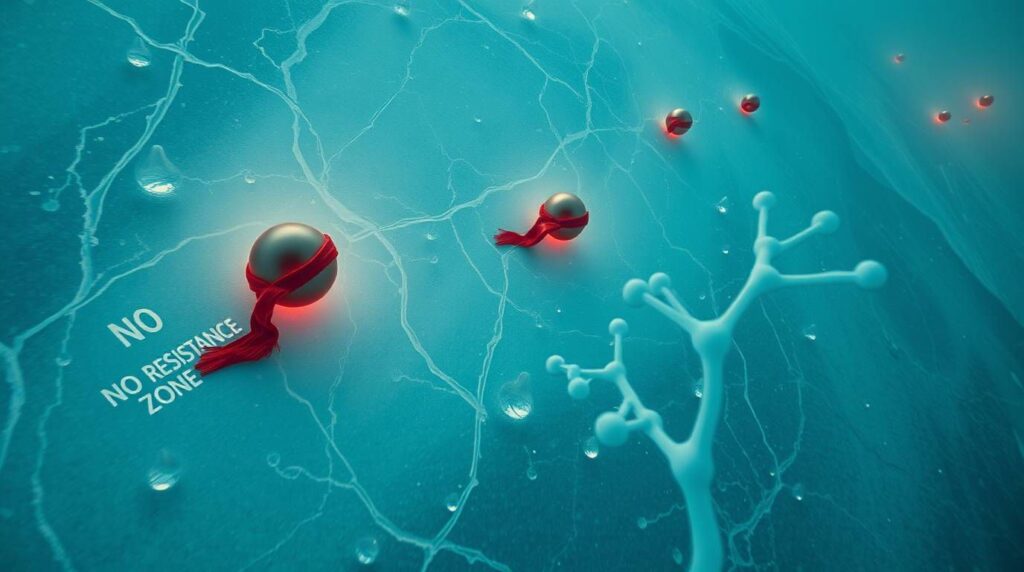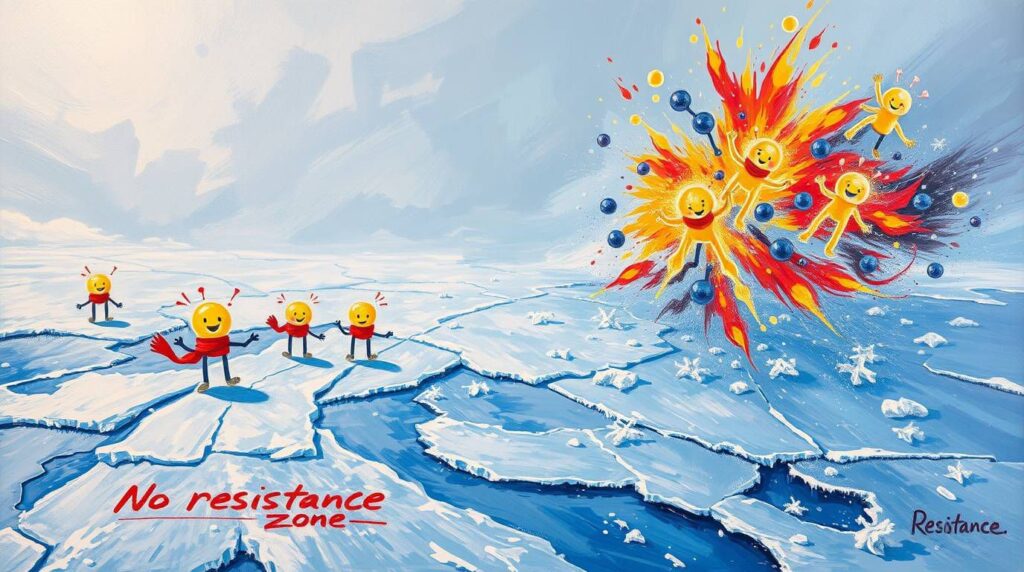Why does superconductivity require low temperatures?
You’re here — which means the word “superconductivity” probably sounded cool at first, until you saw diagrams, energy band theories, and suddenly felt like you were being electrocuted by confusion.
So let’s skip the textbook fog and talk about this in a way that actually makes sense.
—
Why Does Superconductivity Require Low Temperatures?
Alright, imagine electrons as little kids running down a school hallway. Normally, they bump into desks, trip over backpacks, and sometimes even crash into each other. That chaos? That’s what we call resistance. It slows everything down and wastes energy as heat.
Now picture the same hallway, but all the obstacles are gone, and the floor is freshly waxed. The kids glide straight down like they’re on skates — smooth, fast, and without any crashing.
That’s superconductivity: electricity flowing with zero resistance.
But here’s the catch… to get that perfectly smooth ride, we need the temperature to be suuuuuper low. Like, close-to-absolute-zero low. But why?
Let’s break it down.
—
⚡ The Enemy: Vibrating Atoms (a.k.a. Lattice Madness)
In a normal metal, atoms are always jiggling. Even at room temperature, the metal’s atomic structure (called a lattice) is like a dance floor — atoms bouncing everywhere.
When electrons try to pass through, they constantly get bumped around by these vibrating atoms. That bumping = resistance = wasted energy.
Lower the temperature? The atoms chill out. Literally. They stop jiggling as much, creating a calmer environment.
And in that quiet calm? Something magical happens.
—
🧊 Enter the Cooper Pairs
Here’s where superconductivity kicks in.
At super-low temps, electrons stop acting like angry loners and start pairing up. Yeah, weird right? Two negatively charged particles (which normally repel each other) actually form a chill little duo called a Cooper pair.
Thanks to the cold, these pairs move through the calm lattice without scattering — like two figure skaters gliding in sync across a frozen lake.
This flow is smooth, coordinated, and has zero resistance.
But if the temperature rises? The atoms start dancing again, the pairs break up, and resistance crashes the party. 🧊→🔥 = no more superconductivity.
—




🚀 So Why Not Do This at Room Temperature?
Great question. Scientists have been trying for decades to find materials that can superconduct without needing a giant, freezing-cold lab.
And guess what? They’ve found some “high-temperature superconductors,” but even those still need to be colder than Antarctica in winter.
We’re not there yet — but we’re getting closer.
—
🧠 Recap Without the Brain Freeze:
- Normally, electrical resistance happens because atoms are vibrating and getting in the way.
- At low temperatures, atoms stop jiggling and electrons can form special pairs (Cooper pairs).
- These pairs glide through without resistance = superconductivity.
- But this only works in calm, cold conditions — warmth ruins the magic.
- That’s why superconductors need super low temps to work.
So yeah — cold isn’t just cool, it’s essential.
—
📌 Disclaimer:
This easy version is meant to help you understand the concept better. If your exam or teacher expects a textbook explanation and you write this one instead, we’re not responsible if it affects your marks. Use this for understanding, not copy-pasting.
—
🔗 Related Articles from EdgyThoughts.com:
Why Are Irrational Numbers Non-Repeating Decimals?
https://edgythoughts.com/why-are-irrational-numbers-non-repeating-decimals/
What Makes Non-Euclidean Geometry So Different?
https://edgythoughts.com/what-makes-non-euclidean-geometry-so-different/
8🌐 External Resource:
Want to dive deeper into the science behind it all?
https://en.wikipedia.org/wiki/Superconductivity
How Do Vaccines Train the Immune System 2025
https://edgythoughts.com/how-do-vaccines-train-the-immune-system-2025/
What If We Could Harness Energy from Black Holes 2025
https://edgythoughts.com/what-if-we-could-harness-energy-from-black-holes-2025/






2 Comments